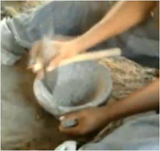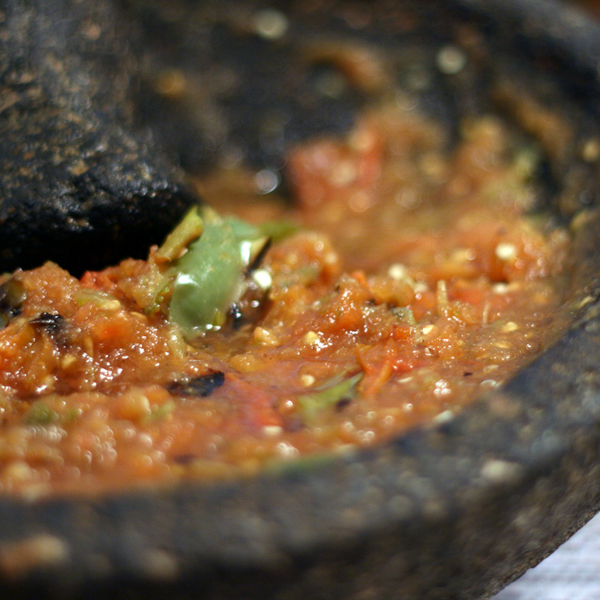Lava Stone Molcajete
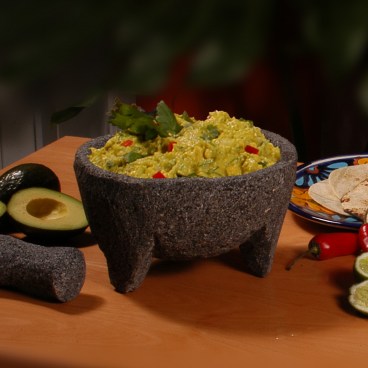
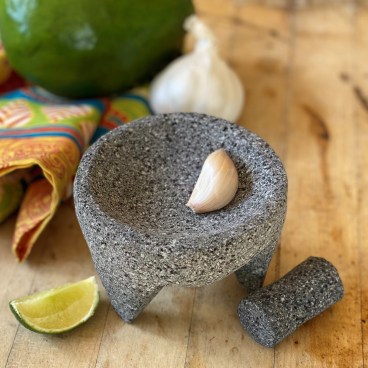
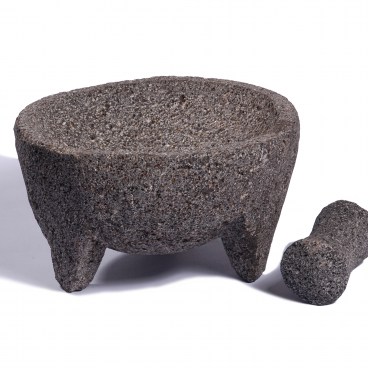
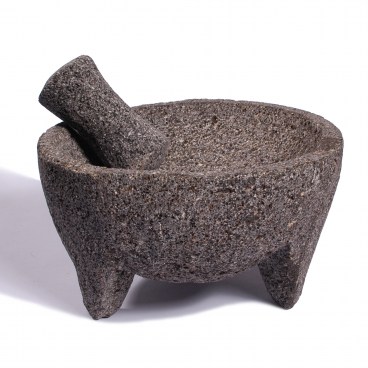
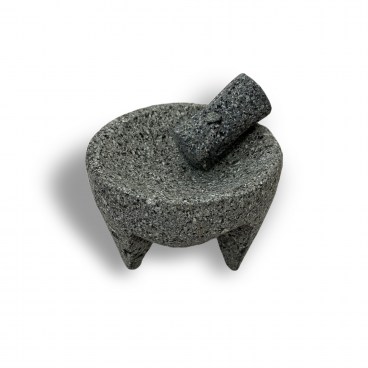
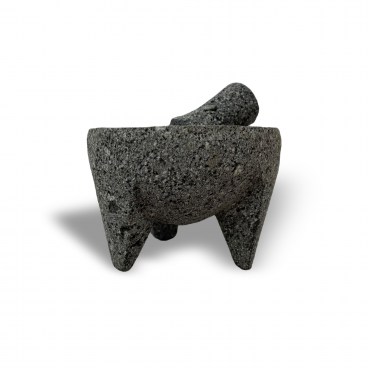
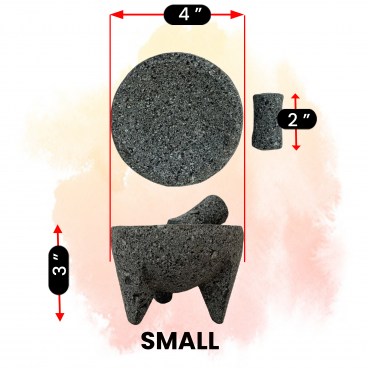
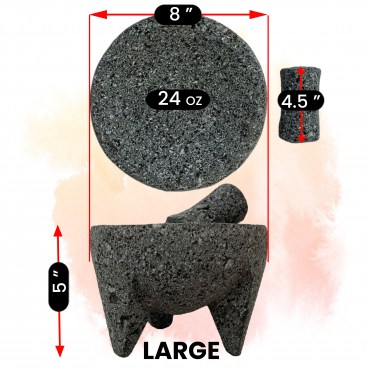
Description
About the piece
Care and Use
Seasoning
How it’s Made
Recipes
Related Products
Reviews
Thursday, 18 August 2016
Thank youVicky
Wednesday, 06 May 2015
Product looked great, but was difficult to clean due to all the crevices.Raymond J Mueller
Tuesday, 14 April 2015
Nice, this will last a very long timeGorilla1960
Tuesday, 15 July 2014
Great Product! The shipping was a huge expense though. Almost as much as the item itself!CeCe
Wednesday, 09 July 2014
Its amazing. Made salsa in it numerous times and the difference in flavor from the same recipe using a blender is phenomenal. I definitely recommend this.Justin
Friday, 27 December 2013
Something my husband wanted to try. His Christmas gift. Hefty. The only not so nice thing was more than $18 in s&h.Cautious Shopper
Sunday, 02 June 2013
Very Happy with my Molcajete. I had always wanted an authentic molcajete and this one is great. It is perfect for mashing avacados or grinding herbs.Lynda Durden
Wednesday, 29 May 2013
Make no mistake, this is not as easy as using your electric coffee/spice grinder, but it is not at all hard. I love the way I can blend spices as I go; the aroma and a finger-tip taste test allow you to balance flavors like you simply can`t do otherwise. You will need to prepare the mortar and pestle for use. The surface comes to you too rough; there is the likelihood of bits of grit knocked off the surface. I found that preparation was not as complicated nor as onerous as some have described. Use 220 grit sandpaper to knock down the course surfaces; the bowl, of course, but also all other areas on which you might rub — those rough bits are sharp. Once it`s well sandpapered, measure out about a quarter-cup of rice. Starting with a small bit, grind it to a course meal. Don`t use a bunch of pressure, let the stone do most of the work. That rice is tough stuff. Keep adding a little rice at a time until it`s all meal. Then keep going until it`s more flour like. It will take a while. Don’t try to rush it by bearing down, it`ll just make you tired. Now you`re ready to put it to use. Take a pinch each of cumin, coriander and sesame seed, two generous pinches of anise seed, and four or five each of whole allspice and de-stemmed cloves. Grind them in your new molcajete. Remove the seeds and stem from a serrano chile, chop and puree in the mortar. Now puree a garlic clove. Chop half a medium onion and puree half of it. Wow! This is getting good. Peel and pit three avocados, remove seeds from two roma tomatoes and dice, and rough chop some cilantro tops to taste. Mash the avocados in the molcajete and squeeze the juice from a lime or a half lemon over them. Fold in the tomatoes, cilantro and the rest of the chopped onion. Serve in the molcajete if using as a dip. If serving individually, sprinkle sesame seed over the tops. Serves six unless one of the six is me. In that case, five are out of luck. Now that`s one master class guacamole made with the right tool.Gary Turner
Monday, 04 March 2013
LOVE IT. I had a friend tell me that the BEST way to make salsa was this. They definitely weren`t kidding. Same salsa recipe I always have used, but my friends all agree it`s the best I`ve ever made. Fantastic.Ireaddreams
Monday, 04 February 2013
I bought this for my husband for his birthday (he lived in Mexico for a few years and loved the food there). It`s very sturdy and a great size. I ground rice in it to make it smooth, and pre-seasoned it with salt, pepper, cumin, garlic and cilantro. We`ve made salsa several times and t`s great--no rock grit or anything. This is the real deal and a great price.Sara S.




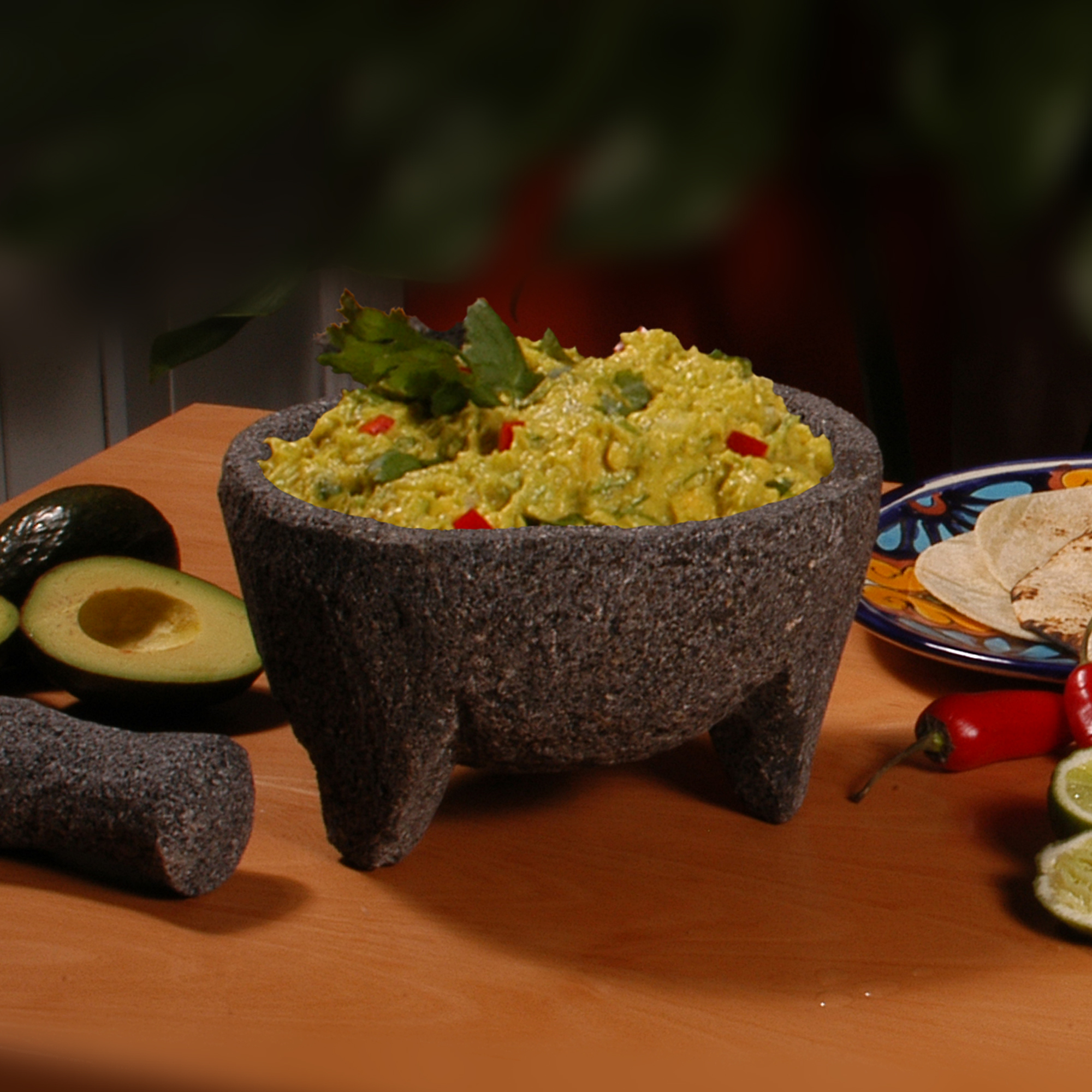


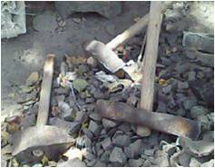 The making of a molcajete is probably one of the arduous tasks in the entire culinary chain world. The process, which has remained unchanged for thousands of years, involves countless hours of an artisan, crouched over a piece of basalt volcanic rock, and slowly chipping away at it with rudimentary tools until the familiar molcajete appears.
The making of a molcajete is probably one of the arduous tasks in the entire culinary chain world. The process, which has remained unchanged for thousands of years, involves countless hours of an artisan, crouched over a piece of basalt volcanic rock, and slowly chipping away at it with rudimentary tools until the familiar molcajete appears.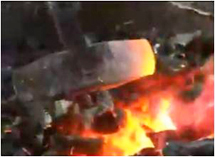 complicated than that and it really begins by making those rudimentary tools made by the artisans themselves. Forged out of
complicated than that and it really begins by making those rudimentary tools made by the artisans themselves. Forged out of 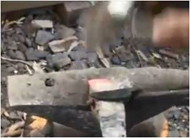 iron, the different axes they use are sharpened by fire and the help of hammers and anvil.
iron, the different axes they use are sharpened by fire and the help of hammers and anvil.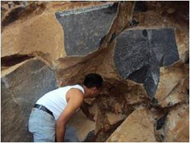 use to make the molcajetes, they have to travel to the quarries where the proper basalt volcanic rocks are found. Once the stones are selected, they begin by splitting off flat slabs. After
use to make the molcajetes, they have to travel to the quarries where the proper basalt volcanic rocks are found. Once the stones are selected, they begin by splitting off flat slabs. After 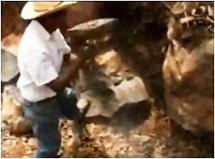 repeatedly hitting a rock at the desired width of the slab with a sharp axe, fissures begin to form and with the help of wedge point crowbar and brute force, they
repeatedly hitting a rock at the desired width of the slab with a sharp axe, fissures begin to form and with the help of wedge point crowbar and brute force, they 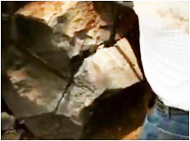 break off large flat slabs of the rock.
break off large flat slabs of the rock.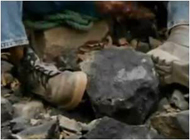 With the slab now in smaller sections, the artisan then begins to chip away at it to make short cylinders
With the slab now in smaller sections, the artisan then begins to chip away at it to make short cylinders 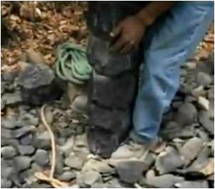 roughly the size of what the ultimate molcajete will be. Usually, this chipping process is done on the ground as they hold the section of rock between their
roughly the size of what the ultimate molcajete will be. Usually, this chipping process is done on the ground as they hold the section of rock between their 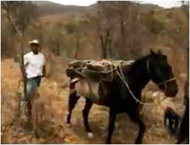 feet. Once he has formed sufficient cylinders, he ties them together in a stack, and with the help of his burro, transports them back to his work place, which is normally no more than a shady spot behind their home, to begin
feet. Once he has formed sufficient cylinders, he ties them together in a stack, and with the help of his burro, transports them back to his work place, which is normally no more than a shady spot behind their home, to begin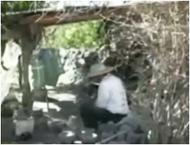 the detail work on the molcajete.
the detail work on the molcajete.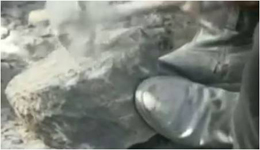 molcajete. The artisans normally start by chipping away at the rock to
molcajete. The artisans normally start by chipping away at the rock to 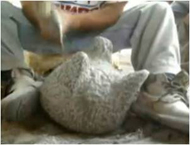 form the legs as they are the most delicate part, easily broken with the slightest wrong hit of the axe, The process takes a great deal of strength and stamina, yet hitting the rock delicately and with precision. As the process continues, all the while, sitting on the floor and holding the rock between their feet, the legs slowly begin to appear from the dust, which cover everything and turn everything grey. The legs are trimmed using narrower axes until they reach the correct dimensions and are ground smooth by the sharp instrument and delicate, but brute force.
form the legs as they are the most delicate part, easily broken with the slightest wrong hit of the axe, The process takes a great deal of strength and stamina, yet hitting the rock delicately and with precision. As the process continues, all the while, sitting on the floor and holding the rock between their feet, the legs slowly begin to appear from the dust, which cover everything and turn everything grey. The legs are trimmed using narrower axes until they reach the correct dimensions and are ground smooth by the sharp instrument and delicate, but brute force. The forming molcajete is then turned over, and the process of digging out the bowl section begins. The artisan carefully begins hitting the center of the mocajete with a blunter axe, which slowly begins to chip away a bowl like cavity in the rock. Eventually smaller, sharper axes are used to finely smooth the bowl.
The forming molcajete is then turned over, and the process of digging out the bowl section begins. The artisan carefully begins hitting the center of the mocajete with a blunter axe, which slowly begins to chip away a bowl like cavity in the rock. Eventually smaller, sharper axes are used to finely smooth the bowl. 